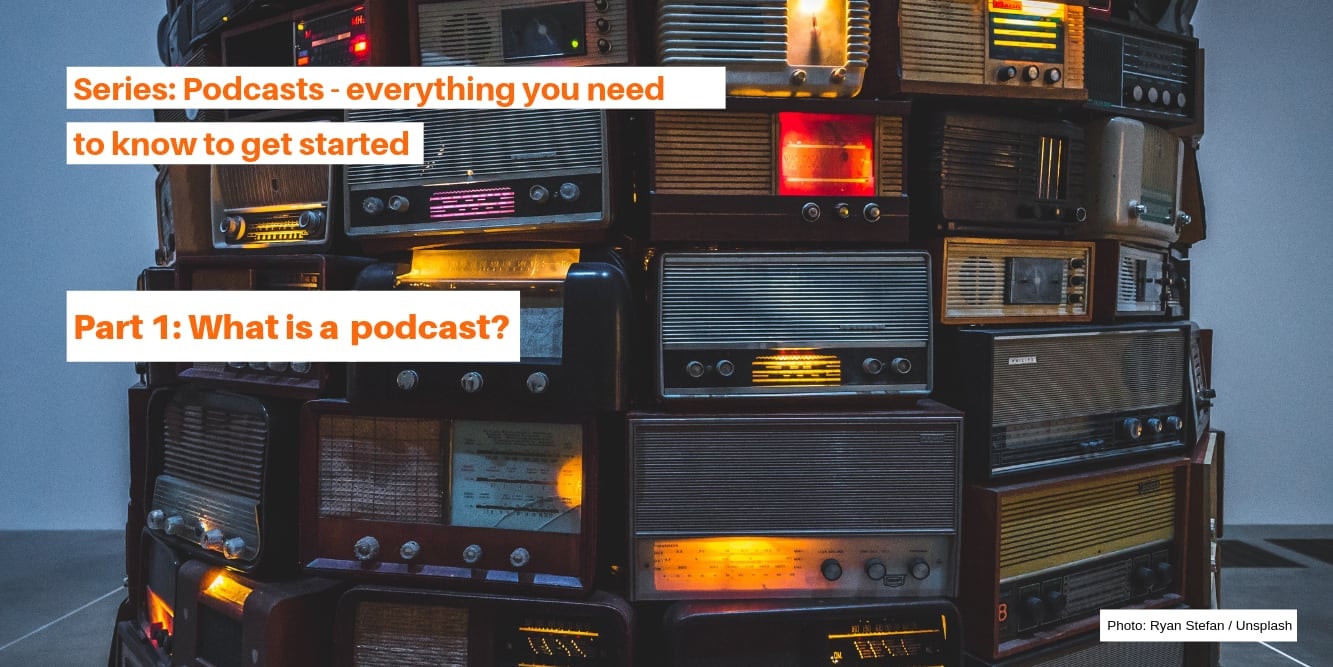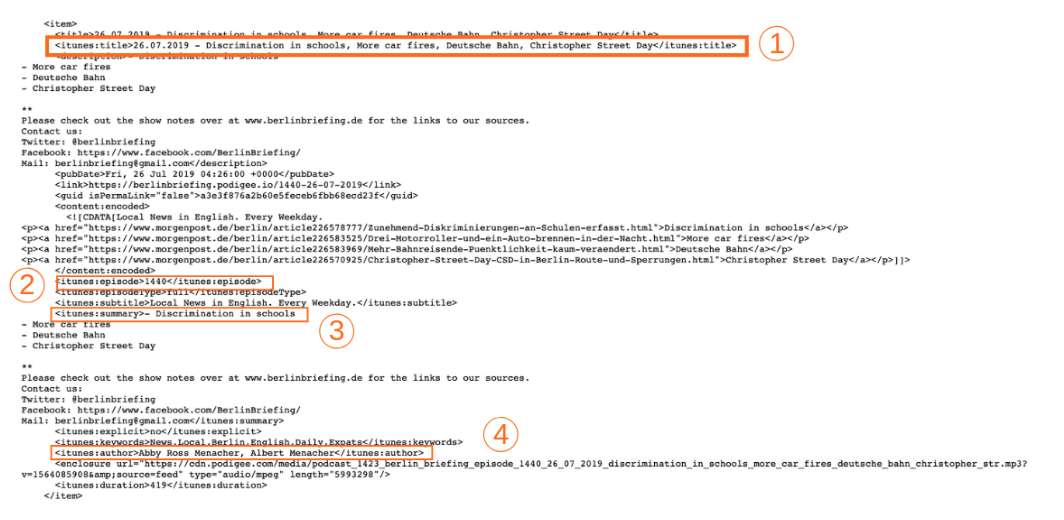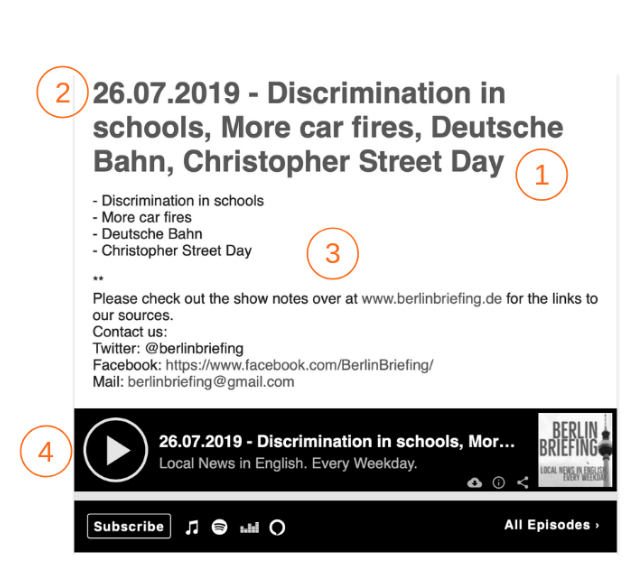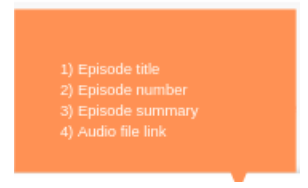In the series "Podcasts - everything you need to know to get started" we take a closer look at different aspects of podcasting. In part 1, we clarify what podcasts are.

Podcasts are a great medium. They are available for almost all topics and niches, they are not dependent on a single large platform, they are perfect for immersing yourself in stories and the hosts often tell stories at eye level and ideally create an emotional connection between the listeners and the podcast. These are all reasons why podcasts have gained popularity in recent years. What are podcasts? How can you listen to them and how to produce them yourself - that and more will be explained in this series.
We have a fresh, updated 10-step guide to help you start your podcast from scratch. Get started today with expert tips and recommendations to ensure your podcasting success.
Click here to begin!
Other parts of the series “Podcasts - everything you need to know to get started”
The term “podcast” is a word created from iPod (Apple MP3 player) and broadcast. The development of the medium goes back to the beginning of the 2000s. It became more widely known when Apple integrated a podcast directory into the iTunes music program in 2005.
Unfortunately, it is not easy to define exactly what a podcast is, because in principle it means two things at once: a technical distribution channel and a certain content form.
Technical definition
Technically, a podcast consists of an RSS feed and media files to which it refers. So an audio file that is somewhere on the internet is not yet a podcast. The RSS feed is a machine-readable file that is based on a constant URL. The unique address of the RSS feed of Podigee Podcast News, for example, looks like this:
https://podcast-news.podigee.io/feed/mp3
ℹ️ Technically, not only audio files can be linked in an RSS feed, but also videos or, theoretically, ebooks. Today, the term podcast is usually used exclusively for audio content.
The feed contains all relevant metadata of the podcast and the individual episodes such as episode titles, numbers, descriptions, show notes and of course the links to the audio files. You can subscribe to this RSS feed using a special program called a podcatcher or podcast client. The podcatcher (in most cases an app on the smartphone) turns the machine-readable file into a clear presentation of the podcast and its episodes. Here you can see how the information of an episode from the RSS feed (left) is displayed in the Apple Podcasts app (right):
(Enlarge image: right click - new tab)



Here you can listen to our example “Berlin Briefing”: https://berlinbriefing.podigee.io
ℹ️ By the way: Most podcast directories like Apple Podcasts (formerly iTunes), Google Podcasts, and Deezer only get their information from RSS feeds and when a user downloads an episode from these platforms, the file comes from the podcast host. Only Spotify operates differently at this point and copies the audio files to their own servers.
Content definition
First of all: There is no such thing as THE one form of content that makes a podcast. On the contrary: radio stations have been using the technical distribution channel podcast for years for a kind of secondary exploitation of their programme: classical programmes such as news, reports etc. are also offered as podcasts, but their content does not differ from the respective programme on linear radio.
There are formats however, which differ strongly from the classical radio and meanwhile also radio stations, publishing houses and podcast labels produce contents particularly as podcast. Often they differ in speech, take the listeners through the research process and their length do not depend on a transmission scheme. Two examples of popular podcast formats:
Chit chat podcasts
Many popular podcasts are formats in which two or more people talk to each other. Sometimes the conversations are unprepared and sound like a ‘girls’ or boys’ evening on the couch; sometimes there’s a lot of research involved and it’s about a very specific topic. As a rule, however, recording is done in one piece and the programme is not elaborately built; no texts are prescribed or clips are used. This format, sometimes also referred to as a chit chat podcast, inspires listeners because the conversations take place at eye level and do not sound like radio at all. Examples of podcasts of this genre are Welcome to my box and Coffee and a chitchat.
Serial journalism
Anyone who deals with podcasts will sooner or later come across Serial. The US podcast caused a real hype in 2014 and is a model for a whole series of other true crime formats. In the podcast, journalist Sarah Koenig reopens the case of a high school student who was murdered in 1999. She talks to the murderer, who has been in prison ever since, and has doubts as to whether he was rightly convicted. The peculiarity was, that Koenig shared her research, doubts and phone calls with the listeners. The end of the series had not yet been decided when the first episodes were published, instead it was continuously researched, told and the listeners were also involved.
However, the success of these formats does not mean that one should necessarily follow them or that only they would like to be heard. One reason for the enthusiasm they have triggered is that they differ from the previous formats.
Next: How can I listen to podcasts?
Note: We did not receive any money or other consideration for mentioning podcasts, hardware or software in this article. The recommendations are based on personal experience or research and are of course not exhaustive.